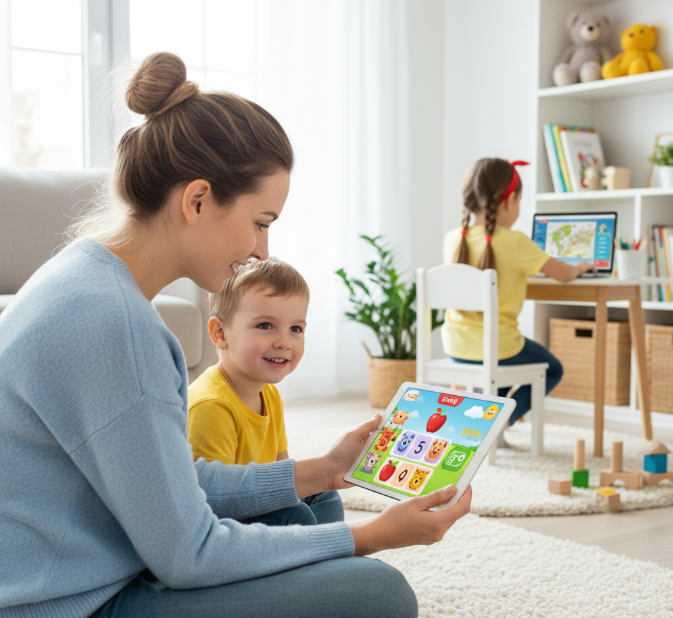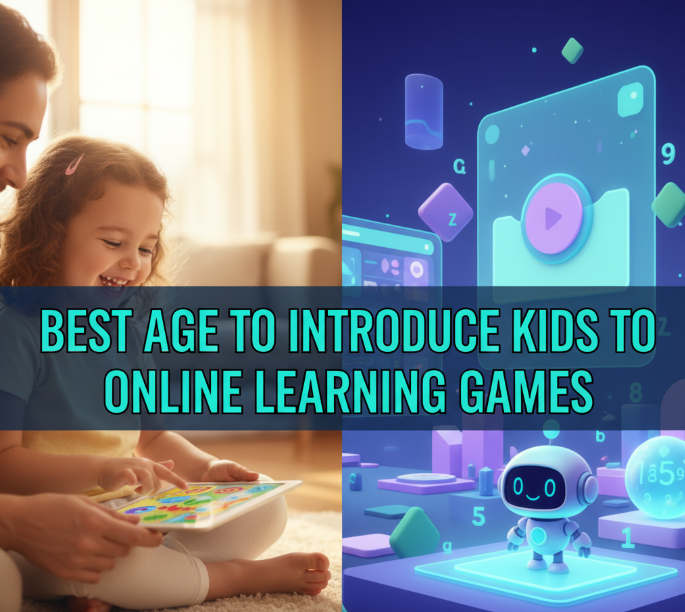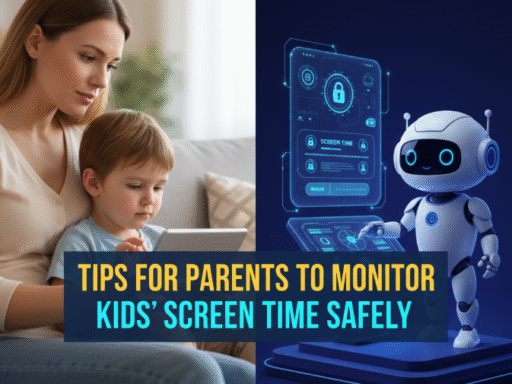Introduction
In today’s digital world, children are surrounded by screens from a very young age. From tablets and smartphones to laptops and smart TVs, technology has become a part of everyday life. Parents and educators often ask the same question: What is the best age to introduce kids to online learning games?
While online games can boost creativity, sharpen memory, and teach problem-solving, starting too early or using them without guidance may cause more harm than good. This article explores the ideal age to introduce children to online learning games, factors to consider, benefits and risks, and tips for parents to make learning both fun and safe.
Why Parents Consider Online Learning Games
Before diving into the right age, it’s important to understand why parents think about online games for their children in the first place.
-
Engagement: Kids find interactive games more enjoyable than books or lectures.
-
Educational value: Many games are designed to teach math, reading, science, and critical thinking.
-
Preparation for the future: Technology is an essential skill for school and careers.
-
Entertainment combined with learning: Games provide a balance of fun and education.
However, timing and balance are everything.
At What Age Should Kids Start Online Learning Games?
Experts generally recommend ages 5 to 7 as the ideal starting point. At this stage:
-
Kids can recognize numbers, letters, and patterns.
-
Their attention span is long enough for structured activities.
-
They can follow instructions given in games.
-
Parents and teachers can guide them easily.
That said, younger children (ages 2–4) can also benefit from very simple, interactive learning apps, but these should be screen-light, parent-guided, and short in duration.
Developmental Stages and Online Learning Readiness
Let’s break it down by age group:
| Age Group | Online Learning Readiness | Recommended Activities |
|---|---|---|
| 0–2 years | Not recommended. At this stage, children need physical play, touch, and real-world exploration. | Singing, storytelling, building blocks. |
| 2–4 years | Limited exposure (10–15 minutes max per day). Games should be very simple and used with parental involvement. | Color-matching, shape-sorting, sing-along apps. |
| 5–7 years | Best age to start structured online learning games. | Math puzzles, alphabet games, interactive story apps. |
| 8–10 years | Strong stage for advanced learning games with problem-solving and creativity. | Strategy games, science simulations, word-building. |
| 11+ years | Can use educational platforms independently with some guidance. | Coding games, logic-based challenges, online quizzes. |
Why Ages 5–7 Are the “Golden Window”
1. Cognitive Development
During this stage, children’s brains are rapidly growing. They are curious and can absorb new information quickly. Learning games make abstract concepts easier to understand.
2. School Readiness
Most kids start formal schooling around 5–6 years old. Online games can support subjects like reading, math, and problem-solving.
3. Ability to Balance Play and Learning
Unlike toddlers, kids at this age can understand rules, follow instructions, and focus for longer periods.
4. Parent-Child Interaction
Children are still dependent on parents, which makes it easier for families to set screen-time boundaries.
Benefits of Introducing Learning Games at the Right Age
Educational Growth
-
Enhances vocabulary and reading skills.
-
Builds strong math foundations through puzzles and challenges.
-
Encourages scientific curiosity.
Critical Thinking and Problem Solving
Games require kids to think logically, find solutions, and make decisions.
Creativity and Imagination
Drawing apps, coding games, and storytelling platforms allow kids to express themselves.
Confidence and Motivation
Kids feel a sense of achievement when they solve puzzles or reach new levels.
Social Interaction
Some multiplayer educational games teach teamwork, communication, and healthy competition.
Risks of Starting Too Early
If parents introduce online learning games before a child is ready, it may lead to:
-
Screen addiction – excessive attachment to devices.
-
Reduced physical activity – less outdoor playtime.
-
Delayed social skills – kids may prefer screens over real interactions.
-
Shortened attention span – constant stimulation makes focusing harder.
-
Sleep issues – late-night screen exposure interferes with sleep.
Signs Your Child Is Ready for Online Learning Games
Not every child develops at the same pace. Look for these signs before introducing learning games:
-
Follows instructions without repeated reminders.
-
Recognizes letters, numbers, or patterns.
-
Shows curiosity for stories, puzzles, or problem-solving activities.
-
Can sit and focus for at least 10–15 minutes.
-
Enjoys interactive play (like board games or building toys).
If your child displays these behaviors, they are ready for structured online learning.
How Much Screen Time Is Safe?
According to the American Academy of Pediatrics (AAP):
-
Under 2 years: Avoid screen time except for video calls.
-
Ages 2–5: Limit to 1 hour per day, always supervised.
-
Ages 6+: Balance screen use with physical activity, school, and family time.
A simple “20-20-20 Rule” can help: every 20 minutes of screen time, encourage kids to take a 20-second break by looking at something 20 feet away.

Types of Online Learning Games by Age
Ages 2–4 (Simple and Fun)
-
Color-matching apps
-
Animal sound recognition games
-
Alphabet tracing apps
Ages 5–7 (Golden Window)
-
Math puzzle games
-
Phonics and spelling apps
-
Interactive story-based games
Ages 8–10 (Exploration Stage)
-
Strategy games
-
Geography quizzes
-
Coding-for-kids platforms
Ages 11+ (Independent Learning)
-
Advanced science simulations
-
Coding and robotics games
-
Online debate and quiz competitions
Parent’s Role in Guiding Online Learning
Introducing kids to online games isn’t just about age—it’s also about parental involvement.
Steps Parents Should Take:
-
Choose quality apps – not all “educational” games are truly educational.
-
Set boundaries – clear limits for screen time.
-
Play together – co-playing boosts bonding and ensures learning.
-
Encourage balance – mix screen time with outdoor activities, books, and hands-on play.
-
Monitor content – check if the games are safe, age-appropriate, and free of harmful ads.
Comparison: Offline vs. Online Learning Games
| Feature | Offline Games | Online Learning Games |
|---|---|---|
| Accessibility | Requires physical setup (board, cards, toys). | Easily available on devices. |
| Cost | One-time purchase. | Many are free, some need subscriptions. |
| Interactivity | Limited to physical environment. | Highly interactive with sounds, visuals, and levels. |
| Parental Involvement | Often necessary. | Can be guided or independent. |
| Learning Scope | Hands-on skills like teamwork, patience. | Wide subjects like coding, science, math, and language. |
Common Mistakes Parents Make
-
Introducing screens too early.
-
Using games as babysitters instead of tools.
-
Allowing unsupervised internet access.
-
Choosing flashy entertainment apps over true educational ones.
-
Ignoring physical and social play.
Tips for Choosing the Best Learning Games
-
Look for age-appropriate ratings.
-
Check if the game has educational goals (math, science, language, creativity).
-
Read reviews from other parents.
-
Select games that promote problem-solving, not just tapping.
-
Avoid apps overloaded with ads and in-app purchases.
Chart: Ideal Age vs. Game Type
Long-Term Impact of Starting at the Right Age
Children introduced to online learning games at the right age often:
-
Develop strong academic foundations.
-
Become tech-savvy without being screen-dependent.
-
Build problem-solving and logical thinking skills.
-
Show confidence in digital learning platforms.
-
Maintain healthy screen habits into teenage years.
Conclusion
The best age to introduce kids to online learning games is typically between 5 and 7 years old, when children are curious, ready for structured learning, and able to balance play with guidance. Starting too early may risk screen overuse, but introducing games thoughtfully can make learning fun, interactive, and impactful.
Parents play a critical role in choosing the right apps, setting limits, and blending online learning with real-world play. When managed properly, online learning games can transform screen time into a powerful tool for growth and education.




